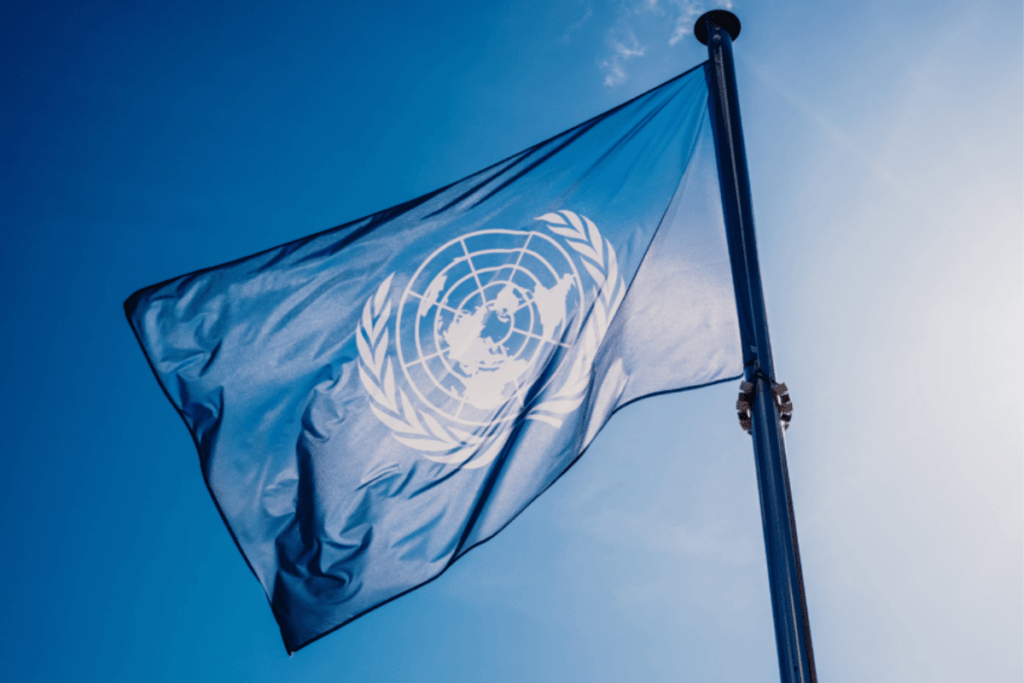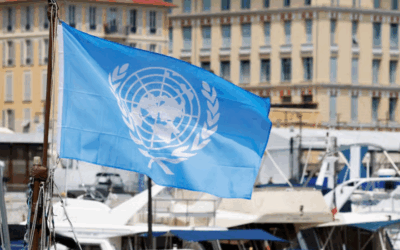Author: Jacqueline Haitz
Editor: Judith de Waard
Research[1] shows that every stage of the plastic life cycle harms the environment and human rights. In June, the UN Human Rights Council commissioned a three-year study on “Plastic Pollution and Its Implications for the Full Enjoyment of Human Rights.”
What is the UN Human Rights Council (UNHRC)?
The United Nations Human Rights Council (UNHRC[2]) is the primary intergovernmental body within the United Nations responsible for promoting and protecting human rights globally. Generally, the council serves as an international forum where UN officials, experts, states, and civil society discuss human rights issues.
The 47 members meet 3 times a year in Geneva to hold the regular sessions[3], discussing human rights and recommending improvements. These recommendations can evolve to become resolutions urging governments to act.

What is the connection between plastic pollution and human rights?
While the environmental impact of plastic pollution is well-documented, its connection to human rights is less visible but carries significant consequences. UN experts have been warning about the negative effects of plastic pollution on human rights for years[4].
Approximately 400 million tonnes of plastic[5] are produced each year. Every piece of plastic, including microplastics, can release harmful chemicals. Plastic contaminates the air we breathe, the water we drink, and the food we eat[6].
Plastic pollution affects us all, but it does not affect us equally. The UN emphasised that marginalised groups are more exposed to plastic pollution, resulting in them experiencing greater harm[7]. Moreover, marginalised groups are often found in so-called “sacrifice zones”.[8] According to The Climate Reality Project, these zones are characterised by residents—typically low-income families and people of colour—living near polluting industries such as petrochemical plants, exposing them to air and water pollution through dangerous chemicals.
Launching a study on plastic pollution and its implications on human rights.
Due to this impact, the UNHRC has called for a new resolution during the 56th regular session held this June in Geneva.
To gain a deeper understanding of the issue, the Advisory Committee has been tasked with conducting a three-year study on “Plastic Pollution and Its Implications for the Full Enjoyment of Human Rights (A/HRC/DEC/56/117)”[9]. Additionally, the study should study the full lifecycle of plastic and how it affects the enjoyment of human rights.
This resolution aligns with the UN Environment Assembly’s (UNEA) Global Plastics Treaty[10] and has been under development since March 2022. The Global Plastics Treaty aims to end plastic pollution by addressing the full lifecycle of plastic through an international agreement.

How could this study impact future policymaking?
The findings might uncover new scientific insights into the repercussions of plastic pollution and associated chemicals on humans. Furthermore, this study has the potential to enhance international cooperation by raising awareness and pushing to find global solutions for a global issue. New regulations addressing plastic production, use, disposal, and clean-up efforts could influence policies and actions. Regulation is essential in solving plastic pollution, which you can read more about in this article.
At The Great Bubble Barrier, we reduce plastic pollution in rivers and prevent it from reaching the ocean. While our technology addresses plastic at its last stage, it is important to tackle the full lifecycle of plastic, starting with reducing plastic production.
To effectively address plastic pollution and safeguard our environment and human rights, it’s important to complement clean-up solutions like Bubble Barriers with broader efforts. Conducting research, such as the HRC study, and raising further awareness is essential to tackle the problem at its root.
References
[1] United Nations. (2023). ‘Toxic tidal wave’ of plastic pollution putting human rights at risk. UN News. https://news.un.org/en/story/2023/06/1137267
[2] United Nations Human Rights Council. (n.d.). About the Human Rights Council. United Nations Office of the High Commissioner for Human Rights. https://www.ohchr.org/en/hr-bodies/hrc/about-council
[3] United Nations Human Rights Council. (n.d.). Sessions of the Human Rights Council. United Nations Office of the High Commissioner for Human Rights. https://www.ohchr.org/en/hr-bodies/hrc/sessions
[4] United Nations. (2021, March 2). Plastic pollution disproportionately hitting marginalized groups, UN environment report finds. https://news.un.org/en/story/2021/03/1088712
[5] Ritchie, H., Samborska, V., & Roser, M. (2023). Plastic pollution. Our World in Data. https://ourworldindata.org/plastic-pollution
[6] Thompson, C. (2019). You eat thousands of bits of plastic every year. National Geographic. https://www.nationalgeographic.com/environment/article/you-eat-thousands-of-bits-of-plastic-every-year
[7] United Nations. (2023). ‘Toxic tidal wave’ of plastic pollution putting human rights at risk. UN News. https://news.un.org/en/story/2023/06/1137267
[8] The Climate Reality Project. (2021). Let’s talk about sacrifice zones. https://www.climaterealityproject.org/blog/lets-talk-about-sacrifice-zones
[9] United Nations. (2024). Summary of the 56th session of the Human Rights Council. United Nations General Assembly. https://www.un.org/pga/wp-content/uploads/sites/108/2024/07/HRC56-Summary.pdf
[10] United Nations Environment Programme. (2023). Historic day in campaign to beat plastic pollution as nations commit to develop a legally binding instrument. https://www.unep.org/news-and-stories/press-release/historic-day-campaign-beat-plastic-pollution-nations-commit-develop




